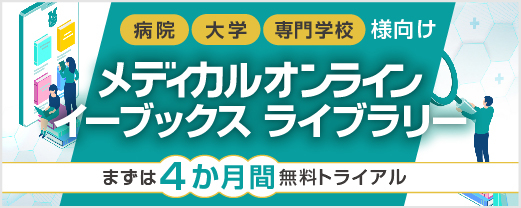アブストラクト
Japanese
| Title | 脳卒中患者の治療と就労の両立支援における作業療法 〜クモ膜下出血, 脳梗塞後に左片麻痺, 注意機能障害を呈した症例を通して〜 |
|---|---|
| Subtitle | 症例 |
| Authors | 福島敏之1), 住吉千尋2), 富永雅子1)2), 豊田章宏2) |
| Authors (kana) | |
| Organization | 1)独立行政法人労働者健康安全機構中国労災病院中央リハビリテーション部, 2)独立行政法人労働者健康安全機構中国労災病院治療就労両立支援センター |
| Journal | 日本職業・災害医学会会誌 |
| Volume | 68 |
| Number | 3 |
| Page | 194-198 |
| Year/Month | 2020 / 5 |
| Article | 報告 |
| Publisher | 日本職業・災害医学会 |
| Abstract | 「要旨:」【はじめに】くも膜下出血発症後の急性期より治療と就労の両立支援を開始し, 退院後も作業療法士(以下OTR), 両立支援コーディネーター(以下, 両立Co)による外来フォローを継続することで新規就労に至った症例について報告する. 【症例】40代男性. くも膜下出血発症後に脳梗塞を合併し, 重度の左片麻痺, 記憶障害, 注意機能障害を呈していた. 発症直後より当院でリハビリテーションを開始し, 発症後1カ月で回復期病院に転院, 4カ月で自宅退院し当院にて外来での作業療法(以下OT)開始. 外来開始時, 左片麻痺が残存していたが, 独歩可能でADLは概ね自立. 発症時の職場は発症後に退職済みであり, 新規就労を目的に支援を開始した. 【経過】1) 外来リハ開始時期(発症後4カ月):認知機能課題や家事動作練習を中心に実施した. また, 自宅生活の把握や時間管理を目的にメモリーノートを導入した. この時点では復職を見据えつつ, Instrumental activity of daily living(IADL)の拡大を目標とした. 2) 福祉就労時期(発症後10カ月):就労継続支援B型事業所(以下, B型事業所)への通所を開始した. 外来OTでは, B型事業所での問題点について確認や指導を行った. 3) 就労後(発症後1年4カ月):職場実習を経て自動車ディーラーに洗車と部品の仕分け担当として障害雇用で就労した. 就労後にはOTR, 両立Coが職場訪問を行い, 職場との情報共有を実施した. 就労1年後に職場訪問を行った際にも問題は見られず継続が確認できた. 【考察】本症例は, 急性期ではADLは全介助レベルであり, 就労を想像できる状態ではなかった. OTでは, 生活状況の聴取や高次脳機能, 作業能力の評価を実施し, 困難な作業の抽出や課題提供を行うことで, その時期に応じた具体的な目標設定を行うことができたと考える. また, 両立Coとの関わりにより, 急性期, 回復期, 生活期と環境が変化しても一貫した支援を継続し, 他施設や職場との円滑な連携が可能になり就労に繋げることができたと考える. |
| Practice | 臨床医学:外科系 |
| Keywords | 両立支援, 脳卒中, 復職, treatment and work-life balance support, stroke, return to work |
English
| Title | Occupational Therapy under the Promotion of Health and Employment Support for Stroke Patients 〜 A Case of Left Hemiplegia and Attention Disorder Following a Subarachnoid Hemorrhage Complicated by Cerebral Infarction 〜 |
|---|---|
| Subtitle | |
| Authors | Toshiyuki Fukushima1), Chihiro Sumiyoshi2), Masako Tominaga1)2), Akihiro Toyota2) |
| Authors (kana) | |
| Organization | 1)Central Department of Rehabilitation, Chugoku Rosai Hospital, Japan Organization of Occupational Health and Safety, 2)Department of Rehabilitation, Chugoku Rosai Hospital, Japan Organization of Occupational Health and Safety |
| Journal | Japanese journal of occupational medicine and traumatology |
| Volume | 68 |
| Number | 3 |
| Page | 194-198 |
| Year/Month | 2020 / 5 |
| Article | Report |
| Publisher | Japanese society of Occupational Medicine and Traumatology |
| Abstract | 【Introduction】 Herein, we present a case of a patient who obtained new employment following the promotion of health and employment support implemented during the acute phase after a subarachnoid hemorrhage and continuous outpatient follow-ups with an occupational therapist (OTR) and coordinator for the promotion of health and employment support even after discharge. 【Subject】 The patient was a man in his 40s who developed a subarachnoid hemorrhage complicated by cerebral infarction, exhibiting severe left hemiplegia and memory and attention disorders. Rehabilitation was immediately started after the onset of stroke at our hospital, the patient was transferred to a convalescent hospital 1 month thereafter, and occupational therapy (OT) was initiated at the outpatient department of our hospital after discharge in the 4th month. During the first outpatient follow-up, his left hemiplegia persisted, but he could walk independently; he was categorized as independent according to the activities of daily living (ADL) category. The patient had resigned from his original workplace after the onset of stroke, and support was initi- ated aiming for new employment. Progress】 1) Outpatient Rehabilitation Start Period (4 months after the onset): Rehabilitation was initiated with a focus on cognitive function tasks and housework practice. In addition, a memory notebook was introduced for grasping home living and time management. At this point, the goal was to expand the instrumental activity of daily living in anticipation of reinstatement. 2) Welfare Employment Period (10 months after the onset): The patient regularly visited the Supported Employment Type B Office. During the outpatient OT. The issues at the Type B Office were addressed and guidance was provided. 3) After Employment (16 months after the onset): After the workplace training, the patient was employed under the disability employment program as the person-in-charge of car wash and sorting of parts at an automobile dealer. In addition, the OTR and coordinator of the promotion of health and employment support visited the workplace and shared the necessary information. No issue was observed during the workplace visit at 1 year after the employment, and employment continuation was confirmed. 【Discussion】 In the acute phase of stroke, the patient's ADL category was total assistance, and thus, employment was not possible. During OT, the OTR could set specific goals corresponding to each period by extracting difficult occupations and setting tasks after understanding the patient's living conditions and performing functional assessment. In addition, with the coordinator's cooperation on the promotion of health and employment support, support was continued consistently despite environmental changes from the acute phase to convalescent and living phases, and a smooth cooperation with other facilities and workplaces was possible; thus, the patient obtained new employment. |
| Practice | Clinical surgery |
| Keywords | treatment and work-life balance support, stroke, return to work |
- 全文ダウンロード: 従量制、基本料金制の方共に770円(税込) です。
参考文献
- 1) 佐伯 覚, 蜂須賀研二:脳卒中後の復職-近年の研究の国際動向について. 総合リハ 39:385-390,2011.
- 2) 佐伯 覚:脳血管障害後の就労支援. 産業ストレス研究 25(3):297-304,2018.
- 3) 豊永敏宏:職場復帰のためのリハビリテーション -脳血管障害者の退院時における職場復帰可否の要因-. 日職災医誌 56(4):135-145,2008.
- 4) 徳本雅子, 石附智奈美, 宮口英樹, 豊田章宏:脳卒中患者が新規就労・仕事定着に至る過程における気持ちの変化の特徴に関する探索的研究. 日職災医誌 63(1):41-49,2015.
- 5) 青木重陽:【高次脳機能障害のリハビリテーション -回復の可能性-】前交通動脈瘤破裂. Jpn J Rehabil Med 53:280-286,2016.
残りの3件を表示する
- 6) 豊田章宏, 齊藤陽子:脳卒中後の治療と職業生活の両立支援 急性期から就労へと繋ぐ「復職コーディネーター」の意義と役割. 職業リハビリテーション 30(2):12-20,2017.
- 7) 池田絵美, 八重田淳:高次脳機能障害者の医療から就労への移行:量的研究. 職業リハビリテーション 30(2):38-46,2017.
- 8) 武本暁生, 岡崎哲也, 蜂須賀研二:【社会参加・職業復帰の実際】高次脳機能障害. MB Med Reha 152:69-73,2012.



